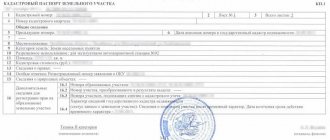What does the owner of a land plot have the right to?
The owner of the land has all the usual rights: to own, use and dispose of (Clause 1 of Article 209 of the Civil Code of the Russian Federation). Only they are implemented with features and restrictions that are established, in particular, by the Civil Code of the Russian Federation, the Land Code of the Russian Federation, and the Law on the Turnover of Agricultural Land.
How can you use the site?
In particular, you have the right:
1) use what is under the site:
underground fresh water and common minerals. They can only be used for one’s own needs and cannot be transferred to other persons (clause 1, clause 1, article 40 of the Land Code of the Russian Federation, article 19 of the Subsoil Law). The list of common minerals has been adopted in each constituent entity of the Russian Federation on the basis of Recommendations approved by Order of the Ministry of Natural Resources of Russia dated 02/07/2003 N 47-r.
Your rights to use everything that is under the site are limited only by laws and the obligation not to violate the rights of third parties (Clause 3 of Article 261 of the Civil Code of the Russian Federation). Other acts, for example orders of local government bodies, cannot limit them (Decision of the Supreme Court of the Russian Federation dated 04/06/2016 N 44-APG16-7);
2) use bodies of water
- also for your own needs. We are talking about ponds and flooded quarries that are located within the boundaries of the site. As a rule, these reservoirs are your property (clause 1, clause 1, article 40 of the Land Code of the Russian Federation, part 2 of article 8 of the Water Code of the Russian Federation). You can use your own reservoir, taking into account the rules and restrictions provided for by the Water Code of the Russian Federation. In particular, use should not harm the environment and you must monitor the serviceability of hydraulic structures on the reservoir (clauses 1, 2, part 2, article 39 of the Water Code of the Russian Federation);
3) build buildings and structures on the site
in accordance with the intended purpose of the land and its permitted use. At the same time, you must comply with town planning regulations, environmental and other standards (clause 1 of article 263 of the Civil Code of the Russian Federation, subclause 2 of clause 1 of article 40 of the Land Code of the Russian Federation). In particular, you are limited in choosing where on the site you can place the building. The town planning regulations determine the minimum setbacks from the boundaries of the site, beyond which it is prohibited to build (clause 2, part 6, article 30, clause 2, part 1, article 38 of the Civil Code of the Russian Federation).
In some cases, construction on the site may be completely prohibited. For example, if it is located in the security zone of a cultural heritage site (clause 2 of Article 34 of the Law on Cultural Heritage Sites).
How can you manage the site?
You have the right to sell it, donate it, pledge it, lease it and dispose of it in any other way, provided that the land is not excluded from circulation or is not limited in it (clause 1 of Article 260 of the Civil Code of the Russian Federation).
Owner's responsibilities
The acquisition of land for permanent ownership involves obtaining not only rights, but also specific obligations of a citizen:
- the use of the site must be sufficiently efficient, in accordance with the purposes prescribed by the contract;
- timely pay state fees for the sale of real estate resources, be it land tax or rent;
Responsibilities of landowners - not to infringe on the interests of other owners and tenants of the land plot. Otherwise, the victim has the right to file a claim in civil court;
- in due time, submit information to the relevant departments, by which one can judge the current legal and physical condition of the site - this information is the components for filling out cadastral registration documents;
- ensure the safety of signs installed on the ground by government agencies. In particular, this applies to geodetic and boundary markings. It is important to understand that ignoring this need is considered a serious act, entailing a number of legal consequences.
Responsibilities of land owners to protect land
Every responsible citizen must adequately understand that obtaining their own land carries with it a certain responsibility. After all, according to regulatory legal acts, he is assigned responsibilities, and if they are not observed, then significant problems can arise with government departments.
Features of the use of lands of various categories
Each land plot classified as one category or another has its own legal regime for the use of land, which should not contradict current legislation.
If we talk about lands located in urban settlements, then the following nuances should be indicated:
- Strict compliance of all activities carried out on the land plot with the city master plan (if we are talking about construction);
- Preventing violation of environmental and sanitary-epidemiological standards during the operation of the land plot;
- Coordination of ongoing activities for the economic feasibility of developing the city budget (if we are talking, among other things, about commercial activities on the territory of the site);
- Mandatory availability of documents confirming the intended actual use of the land plot (for example, if it is allocated for individual housing construction (IHC), then only such construction should be carried out on it).
In addition, each municipality has its own requirements for the use of land plots provided for use:
- If we are talking about specific lands that are allocated, for example, for running personal subsidiary plots, then the main requirement for them will be strict adherence to their intended purpose.
- When considering the use of land allocated for the creation of a peasant farm, it is necessary to comply with the requirement associated with the use of the site for its intended purpose. This means that all actions that are carried out on a specific site must be aimed at creating such a farm or organizing agricultural production.
- When allocating land for use, the purpose of which is to carry out individual housing construction, on such lands it is prohibited for the purposes of their use to build houses with more than three storeys, in which more than one family can live.
- If we are talking about a plot of land allocated for running a personal subsidiary plot, then such a plot can only be used for one’s own personal purposes. Its transfer for rent or sublease is prohibited by the terms of the contract. In addition, organizing another form of farming in this case will be considered illegal.
Responsibility of the owner of the land plot
For violations committed during the exploitation of land, the owner of the allotment is liable in accordance with the norms of the Land and Civil Codes, as well as the Code of Administrative Offences.
Responsibility comes when:
- non-use of memory;
- using the memory for purposes other than its intended purpose;
- illegal seizure of adjacent territory;
- unfair treatment of the surrounding territory;
- in case of violation of other rules of use.
In this case, administrative or civil liability arises , which can be expressed:
- in an administrative or judicial requirement to restore the violated order.
- In penalties and notice of initiation of legal proceedings, by decision of the local administration.
- Termination of the right to use the site, its forced seizure by a court decision.
It is important to know about protecting property rights to your land! Also, do not forget about forms of ownership:
- private;
- public, federal.
Land ownership is the most demanding in terms of compliance with numerous standards established by federal and regional legislation. Read more about all the nuances of this topic on the main page of the section.
Redistribution of plots
The legislation provides for the possibility of redistributing plots - this option is relevant for owners of several territories. During the implementation process, adjacent plots appear, while the existence of old ones ceases in accordance with the reissued documents.
Redistribution can be carried out when certain cadastral works have been carried out. Territories subject to the process must meet certain criteria:
- they are adjacent;
- when forming new boundaries, the rules of land surveying must be observed;
- each plot is located in the same municipality and has an identical land category.
Redistribution of plots
To activate the process, it is necessary to provide an application that reflects the consent of all plot owners to carry out the redistribution. If the procedure is implemented by decision of the judicial authorities, a written request from the owners is not required.
In most situations, the procedure is relevant due to the need to sell a share of land. For example, the owner of the territory wanted to transfer to his neighbor for a monetary reward only part of his plot, but not the whole. In this consideration, alienation is impossible without redistribution - a separate piece of land is not assigned a cadastral number.
Sample application for redistribution of plots
In the process of implementing the decision of the district administration, geodetic measurements and cadastral work are carried out. After their completion and regulatory registration, the owners acquire passports and other title documents for the site with new boundaries.
Legal regulation
In case of non-compliance with the rights of the owner of the land plot, he can file a claim with the Civil Court of the Russian Federation with a demand to restore the violated privileges and receive compensation in situations involving such a moment.
In actual case practice, most of the proceedings are distributed as follows:
- violation of the rights of the owner of real estate due to the actions of third parties. In this case, the plaintiff can base his claims on Art. 12 of the Civil Code of the Russian Federation, which precisely defines possible options for ensuring the safety of one’s rights in connection with their non-compliance or the prerequisites for this. The same act provides for methods of compensation for damage - both material and moral;
- challenging the degree of ownership of real estate. The review procedure will be regulated by Art. 59 of the Land Code of the Russian Federation.
Important: to ensure compliance with legal norms, it will be enough to provide judicial officers with documents confirming the right to dispose of the site.
- in case of unauthorized use of the area by third parties without concluding an agreement with the owner of the territory, the latter may file a claim on the basis of Art. 60 Land Code of the Russian Federation.
The provisions of this article provide for a similar development in the actions of citizens, therefore, in the presence of establishing documents, the victim will restore his rights in full. In this case, all buildings erected by the violator on the territory of the legal owner will be obligatory removed in the future;
- in Art. 61 of the Land Code of the Russian Federation strictly defines that if a normative act is incorrectly drawn up by executive departments that violates the rights of the owner, the court may, by its decision, annul the validity of the document.
Legal ownership of the area is quite subtly regulated by numerous articles of the country's codes, providing significant protection for the interests of the citizen. It is important to understand that in order to avoid problems with the court making the right decision, the owner must have all the title documents in hand.
Features of obtaining the right to use land by court decision
The most common cases of recognition of the right to use land by a court decision should be considered the following cases:
- Refusal to provide a land plot for lease on the basis of the right of pre-emption to enter into an agreement;
- Refusal to provide a plot of land for urgent free use despite the presence of grounds approved by law;
- Failure to provide the opportunity to conclude an easement agreement on a land plot in order to ensure the normal functioning of the plot that is in a worse territorial location.
If one of the listed conditions has been recorded, it is necessary to go to court to resolve the dispute.
Registration of the right of use in the event of a positive decision by the court on the dispute that has arisen will be carried out on the basis of a court decision that has entered into force. This procedure will begin no earlier than the day following the day the judicial act entered into legal force (that is, on the eleventh day from the date of such a decision, if it has not been appealed).
As for the registration of the arisen right, when it is carried out, a copy of the court decision, certified by a notary, must be included in the list of main documents that are provided to obtain a certificate confirming the legality of the arisen right.
In addition, a copy of the court decision with a note about its entry into legal force must be attached to the text of the agreement on the right to use the land, and the text of the agreement itself must contain a link to such an application.
All actions to obtain the right to use land can be carried out only after the court decision has entered into legal force. This means that filing claims for allotment of land to the plaintiff earlier than this period will be unfounded.
Timely payment of land payments
This rule of law is contained in paragraph 5 of Art. 42 of the Land Code of the Russian Federation. The need to make timely payments has a direct connection with the principle that establishes payment for the exploitation of land.
According to this principle, legal use of land is possible only in cases where payments are made. Other conditions may be prescribed in the federal legislation of the Russian Federation and are rather an exception to the general rule.
At the same time, the legislator establishes two main forms of payments for land:
- land tax (was the fundamental form of payment until the introduction of the real estate tax);
- rent.
The procedure and conditions for making payments in the form of land tax are established in strict accordance with legal norms that relate to the taxation of citizens and other additional fees. As for payments in the form of rent, the amount and procedure for payment are established by the lease agreement between the parties to the contract.








